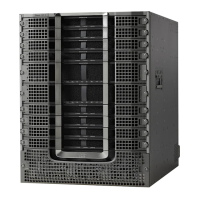•
Ensure that your Cisco CMTS is installed according to the instructions provided in the appropriate
Hardware Installation Guide. The chassis must contain at least one port adapter to provide backbone
connectivity and one Cisco cable line card to serve as the RF cable TV interface.
•
Ensure that all other required headend or distribution hub routing and network interface equipment is
installed, configured, and operational, based on the services to support. This includes all routers, servers
(DHCP, TFTP, and ToD), network management systems, and other configuration or billing systems.
This includes IP telephony equipment including gatekeepers and gateways; backbone and other equipment
if supporting virtual private networks (VPNs); and dialup access servers, telephone circuits and
connections and other equipment if supporting telco return.
•
Ensure that DHCP and DOCSIS configuration files have been created and pushed to appropriate servers
such that each cable modem, when initialized, can transmit a DHCP request, receive an IP address,
obtain TFTP and ToD server addresses, and download DOCSIS configuration files. Optionally, ensure
that your servers can also download updated software images to DOCSIS 1.0 and DOCSIS 1.1 cable
modems.
• Ensure that customer premises equipment (CPE)—cable modems or set-top boxes, PCs, telephones, or
facsimile machines—meet the requirements for your network and service offerings.
•
Familiarize yourself with your channel plan to ensure assigning of appropriate frequencies. Outline your
strategies for setting up bundling or VPN solution sets, if applicable, to your headend or distribution
hub. Know your dial plan if using H.323 for VoIP services and setting up VoIP-enabled cable modem
configuration files. Obtain passwords, IP addresses, subnet masks, and device names, as appropriate.
•
Ensure that the system clocks on the Cisco CMTS and on the time-of-day (ToD) servers are synchronized.
If this does not occur, the clocks on the CMs will not match the clocks on the Cisco CMTS, which could
interfere with BPI+ operations. In particular, this could prevent the proper verification of the digital
certificates on the cable modem (CM).
After these prerequisites are met, you are ready to configure the Cisco CMTS. This includes, at a minimum,
configuring a host name and password for the Cisco CMTS and configuring the Cisco CMTS to support IP
over the cable plant and network backbone.
If you plan to use service-class-based provisioning, the service classes must be configured at the Cisco
CMTS before cable modems attempt to make a connection. Use the cable service class command to
configure service classes.
Caution
Restrictions for DOCSIS 1.1 Operations
DOCSIS 1.1 operations includes the following restrictions:
Baseline Privacy Interface Plus Requirements
BPI+ encryption and authentication must be supported and enabled by both the cable modem and CMTS. In
addition, the cable modem must contain a digital certificate that conforms to the DOCSIS 1.1 and BPI+
specifications.
Also, ensure that the system clocks on the CMTS and on the time-of-day (ToD) servers are synchronized. If
this does not occur, the clocks on the CMs will not match the clocks on the CMTS, which could interfere with
BPI+ operations. In particular, this could prevent the proper verification of the digital certificates on the CM.
Cisco cBR Series Converged Broadband Routers Quality of Services Configuration Guide for Cisco IOS XE Fuji
16.7.x
33
DOCSIS 1.1 for the Cisco CMTS Routers
Restrictions for DOCSIS 1.1 Operations

